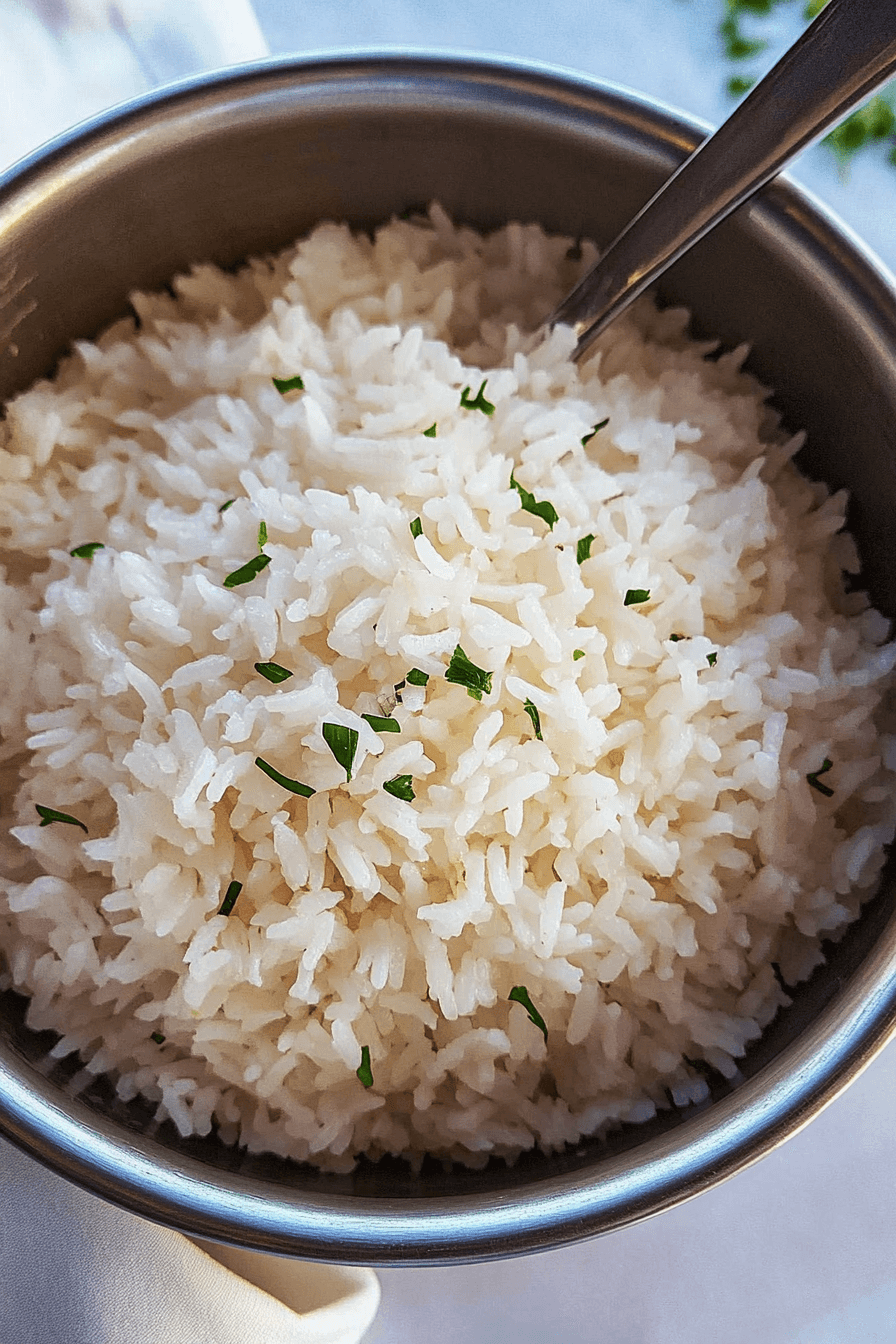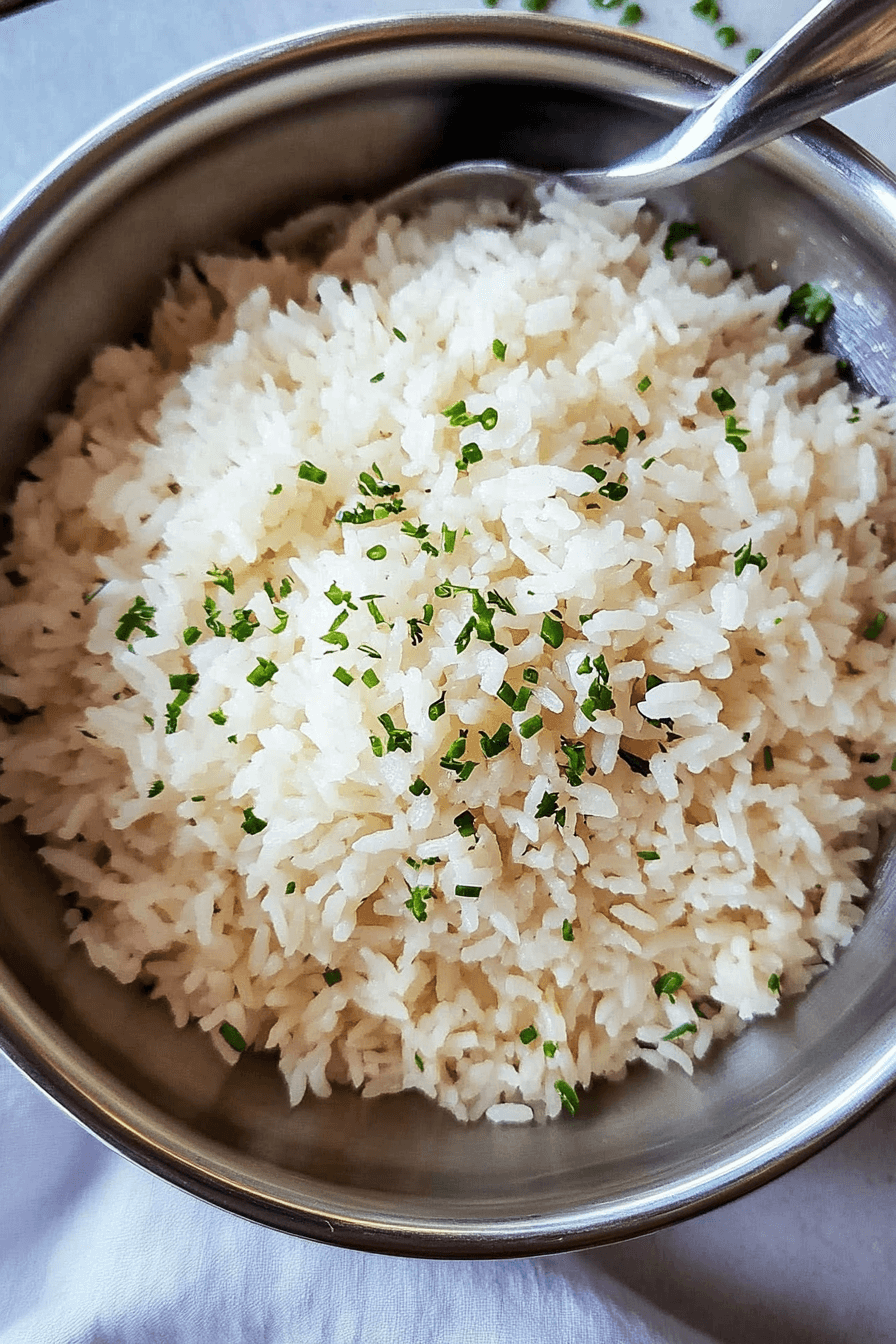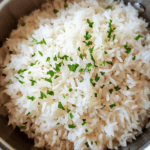Introduction to How to Cook Rice Perfectly
Cooking rice perfectly is an art that, once mastered, adds value to any meal. This simple yet essential skill ensures fluffy, separate grains every time, accommodating a wide array of dishes, whether you are a busy parent, a student, or a culinary enthusiast. By following a few straightforward steps and recommendations, such as rinsing the rice to remove excess starch, you can consistently prepare rice that complements your culinary creations. Whether you’re aiming to perfect a jasmine-infused dish or accompany a shrimp and broccoli stir-fry, these techniques are invaluable. Elevate your cooking game by mastering the key ritual of rice preparation.
Benefits and Advantages of How to Cook Rice Perfectly
Perfectly cooked rice is not only a culinary foundation but also a gateway to nutritious and versatile meals. By learning to cook rice well, you embrace a recipe that is inherently healthy, vegan, and naturally gluten-free. This technique paves the way for meals that cater to diverse dietary needs, offering a robust base for nourishing dishes. Additionally, the simplicity and convenience of rice preparation bring immense relief to busy cooks and those new to the kitchen. With minimal ingredients and tools required, this essential method delivers consistent, delightful results, ensuring delectable pairings for anything from creamy dips to rich curries. By mastering this, you’re also enhancing your repertoire for culinary adventures and bringing ease to daily meal planning.

Ingredients Overview
Essential Ingredients for How to Cook Rice Perfectly
- Rice: 1 cup of your choice (white, jasmine, basmati, or brown). Choose aromatic varieties if you prefer enhanced texture and flavor.
- Water: Use 1.5 cups for most rice types. Aromatic rice like jasmine or basmati may require slightly less, about 1.25 cups, while brown rice needs 2 cups.
- Salt: ½ teaspoon. Optional but adds flavor.
- Butter or Olive Oil: 1 tablespoon. Enhances taste and helps prevent sticking.
Dietary Substitutions to Customize Your How to Cook Rice Perfectly
- Vegan Option: Replace butter with olive oil or coconut oil.
- Low-Sodium Alternative: Use low-salt or salt substitutes like herbs for flavoring.
- Bone Broth Instead of Water: Substitute water with vegetable or bone broth for an enriched flavor.
- Calorie-Conscious Version: Limit the use of oil or butter to minimize calorie intake.
How to Prepare the Perfect How to Cook Rice Perfectly: Step-by-Step Guide
First Step: Begin by rinsing 1 cup of your chosen rice variety in cold water. Rinse until the water runs clear to remove excess starch, ensuring a fluffy texture.
Second Step: In a medium, heavy-bottomed pot, bring 1.5 cups of water to a vigorous boil. For aromatic rice, you may use 1.25 cups, and for brown rice, bring 2 cups to a boil.
Third Step: Once the water reaches a rolling boil, add the rinsed rice, ½ teaspoon of salt, and, if desired, 1 tablespoon of butter or olive oil. Stir briefly to combine.
Fourth Step: Reduce the heat to its lowest setting. Cover the pot with a tight-fitting lid to trap steam and moisture. Let it simmer gently for about 15-18 minutes for white rice or 45 minutes for brown rice.
Fifth Step: After the cooking time has elapsed, remove the pot from heat. Allow the rice to sit, covered, for an additional 5-10 minutes. This resting period lets the steam complete the cooking process.
Sixth Step: Finally, fluff the rice gently with a fork before serving. This step aerates the grains and ensures a lovely texture.
For those interested in diverse flavors, consider trying our Smothered Chicken and Rice recipe, which pairs perfectly with freshly cooked rice.

Mastering how to cook rice perfectly: Advanced Tips and Variations
Cooking rice seems straightforward, yet achieving that perfect grain can be a challenge. Here are advanced tips and variations to elevate your rice cooking skills, ensuring you get it right every time.
Use the Right Equipment
The utensil you use can make all the difference in cooking rice perfectly. A heavy-bottomed pot ensures even heat distribution, preventing the rice from burning. Alternatively, a rice cooker offers a foolproof method, especially suited for busy professionals and those who multitask in the kitchen. Rice cookers automatically adjust temperature and timing, freeing you up for other tasks.
Soak for Softer Grains
Soaking rice before cooking allows the grains to absorb water, leading to a more uniform texture. For white rice, a 30-minute soak is generally effective. This tip is especially useful for aromatic varieties like basmati and jasmine, which can benefit from a shorter cooking time and less water, creating a more fragrant dish.
Adjusting Water Ratios
The water-to-rice ratio is crucial in achieving the desired texture. For softer rice, increase the water ratio slightly above the standard 1:1.5 for white rice. For firmer rice, reduce the water slightly. Moreover, aromatic rice varieties benefit from a 1:1.25 ratio, delivering a fluffy yet separate grain. Adjust ratios depending on whether you use long or short grain, as each has unique absorption characteristics.
Experiment with Cooking Liquids
For added flavor, consider replacing water with broth when cooking rice. This simple modification enhances the dish without overwhelming its natural taste. Similarly, adding a tablespoon of butter or oil at the start can impart a richer flavor and prevent grains from sticking.
Add Ingredients for Variations
Rice can be a versatile base, capable of accommodating various flavors and ingredients. Stir in herbs such as dill or cilantro at the end of cooking for freshness. For a substantial meal, consider adding vegetables like peas or bell peppers, providing color and nutrition. These additions make rice more appealing to diet-conscious individuals seeking nutritious meals.
How to Store how to cook rice perfectly: Best Practices
Storing rice properly is as crucial as cooking it perfectly. Follow these best practices to maintain the quality of your rice dishes, ensuring they remain fresh and delicious.
Refrigeration Secrets
After cooking, let your rice cool slightly but not completely before placing it in the refrigerator. This prevents condensation, which can lead to sogginess. Store rice in an airtight container to retain moisture and preserve its flavor. Refrigerated rice should ideally be consumed within three to four days for optimal taste and texture.
Freezing for Longer Storage
If you’ve cooked more rice than you can consume in a few days, consider freezing it. Divide the rice into portions in freezer-safe bags or containers, removing as much air as possible to prevent freezer burn. When ready to consume, allow the rice to thaw in the fridge overnight before reheating.
Reheating Tips
Proper reheating ensures your rice remains the star of any meal. Add a tablespoon of water, or broth for added flavor, when reheating in the microwave to recreate steam, making the rice fluffy once more. Alternatively, reheat rice in a pan on low heat, stirring occasionally to evenly distribute heat and dissolve any clumps.
Safety Considerations
Always ensure rice is heated thoroughly to eliminate potential bacteria, especially when reheating. If the rice reaches room temperature, refrigerate or freeze promptly to prevent spoilage. Following these safety practices guarantees that even stored rice retains its quality and safety.

Nutritional Value of how to cook rice perfectly
When considering how to cook rice perfectly, it’s essential to understand its nutritional value to make informed dietary decisions. Rice is a staple food that provides numerous health benefits, making it a popular choice among various demographics.
Nutritional Breakdown of White Rice
| Nutrient | Amount per 100g |
|---|---|
| Calories | 130 kcal |
| Carbohydrates | 28.7 g |
| Protein | 2.4 g |
| Fat | 0.2 g |
| Dietary Fiber | 0.4 g |
| Sodium | 1 mg |
This nutritional profile demonstrates that white rice is primarily a source of carbohydrates, with minimal fat and protein content. It’s imperative to pair rice with other nutrient-dense foods, such as vegetables or lean proteins, to ensure a balanced meal.
Nutritional Differences with Brown Rice
For individuals seeking more fiber and micronutrients, brown rice provides an excellent alternative. Compared to white rice, it retains the bran and germ, offering higher amounts of:
- Fiber
- Magnesium
- Phosphorus
- B vitamins
In 100 grams of cooked brown rice, you’ll find approximately 111 calories, 23 g of carbohydrates, 1.8 g of fiber, 2.5 g of protein, and 0.9 g of fat. This slight increase in nutritional content makes brown rice an attractive option for diet-conscious individuals.
FAQs: Frequently Asked Questions About how to cook rice perfectly
- What is the best water-to-rice ratio for cooking perfect rice?
- For most white rice varieties, a water-to-rice ratio of 1:1.5 is recommended, ensuring the grains are cooked thoroughly without becoming mushy. However, aromatic rices like jasmine and basmati may benefit from a slightly reduced ratio of 1:1.25 for optimal texture.
- Do I need to rinse rice before cooking it?
- Yes, rinsing rice before cooking is crucial as it removes excess starch. This step is vital in achieving fluffy rice by preventing stickiness. Simply rinse the rice under cold water until it runs clear.
- How long should I let the rice rest after turning off the heat?
- After turning off the heat, it’s advisable to let the rice sit covered for 5-10 minutes. This resting period allows the remaining moisture to evenly distribute, resulting in perfect consistency and texture.
- Can I cook different types of rice using the same method?
- While certain principles like the importance of a tight-fitting lid and low simmering apply universally, different types of rice require variations in water ratios and cooking times. For instance, brown rice needs a higher water ratio (1:2) and a longer cooking time (about 45 minutes). It’s essential to adapt based on the type of rice being used.

How to Cook Rice Perfectly Every Time
- Total Time: 48 minutes
Description
🍚 Master the art of cooking perfect, fluffy rice every time with simple techniques that bring out its best texture and flavor! 🍽️
🔥 Say goodbye to mushy or undercooked rice and enjoy a foolproof method that works for any variety—delicious, effortless, and satisfying! 😋
Ingredients
White rice
Water
Salt
Oil or butter (optional)
Broth (optional, instead of water)
Instructions
1. Rinse the rice under cold water until the water runs clear to remove excess starch.
2. If desired, soak the rice in water for 30 minutes for more even cooking.
3. Use the appropriate rice-to-water ratio: 1:1.5 for most white rice, 1:2 for brown rice, and 1:1.25 for aromatic rice like jasmine or basmati.
4. In a heavy-bottomed pot, bring the water to a boil.
5. Add the rinsed rice, salt, and optional oil or butter for extra flavor.
6. Reduce the heat to low, cover the pot with a tight-fitting lid, and let the rice simmer.
7. Cook white rice for 15-18 minutes and brown rice for 45 minutes without stirring.
8. Remove the pot from heat and let the rice sit, covered, for 5-10 minutes to finish steaming.
9. Fluff the rice gently with a fork to separate the grains.
10. Let the rice cool slightly before storing leftovers to prevent sogginess.
Notes
Rinse the rice thoroughly before cooking to remove excess starch and achieve fluffy texture.
Use the correct water-to-rice ratio based on the type of rice to prevent mushiness or dryness.
Let the rice sit covered off the heat for a few minutes after cooking to allow even absorption and better texture.
- Prep Time: 30
- Cook Time: 18
- Category: Side Dish
- Method: Boiling
- Cuisine: Global

